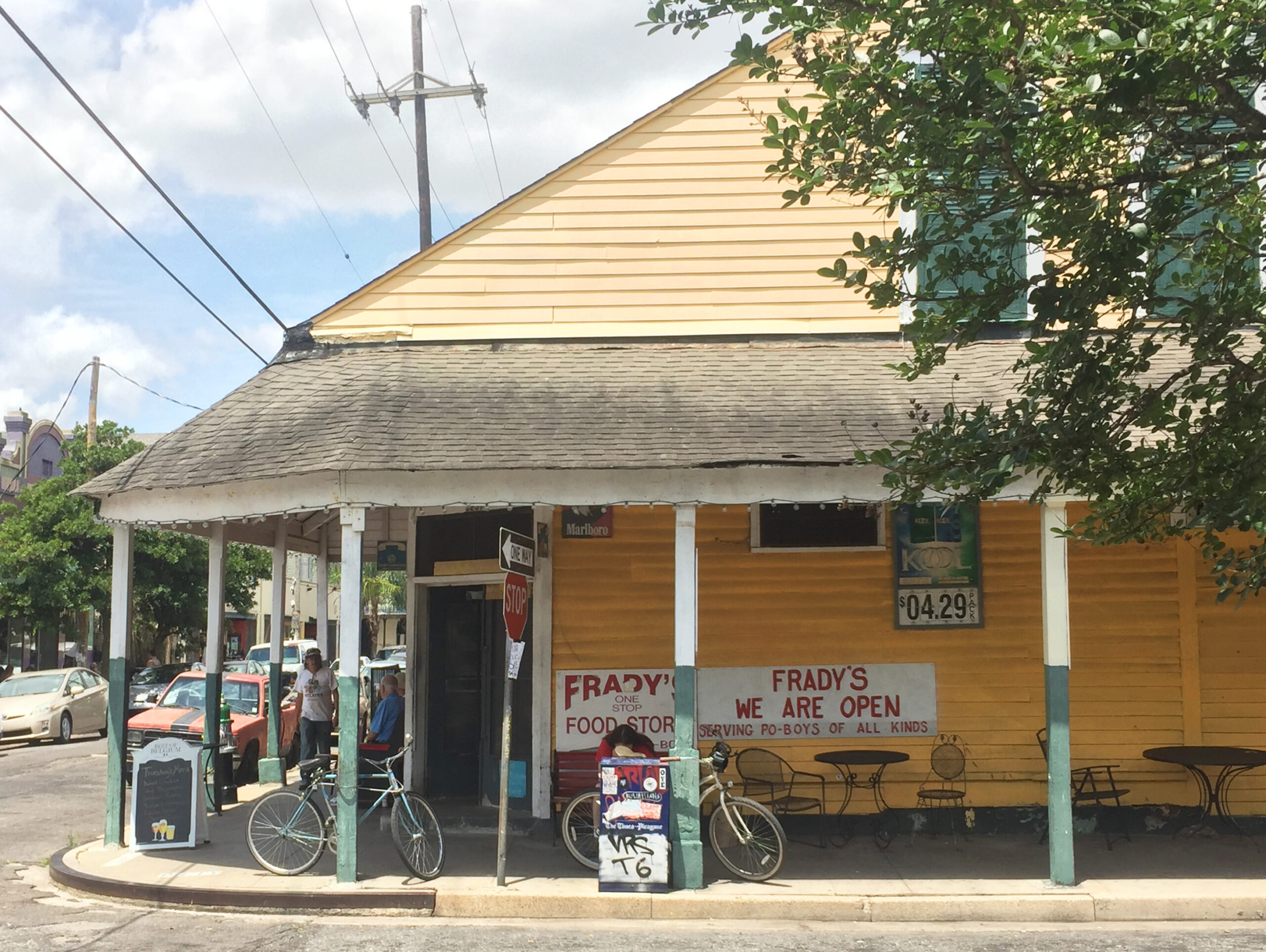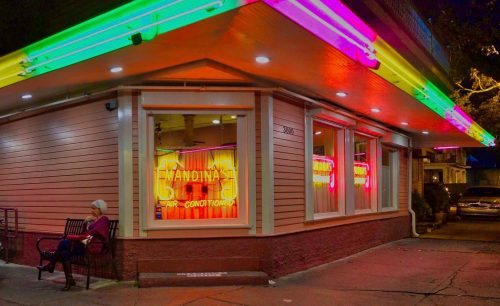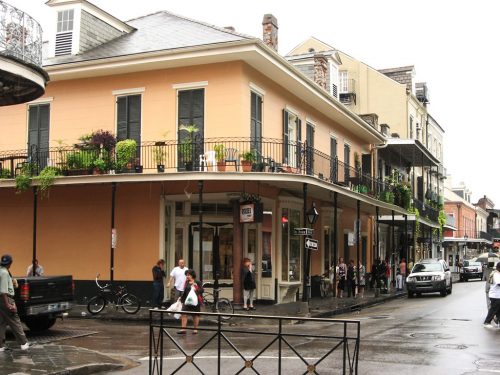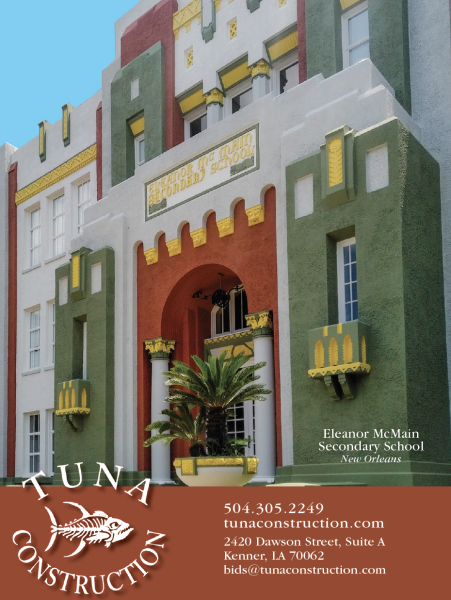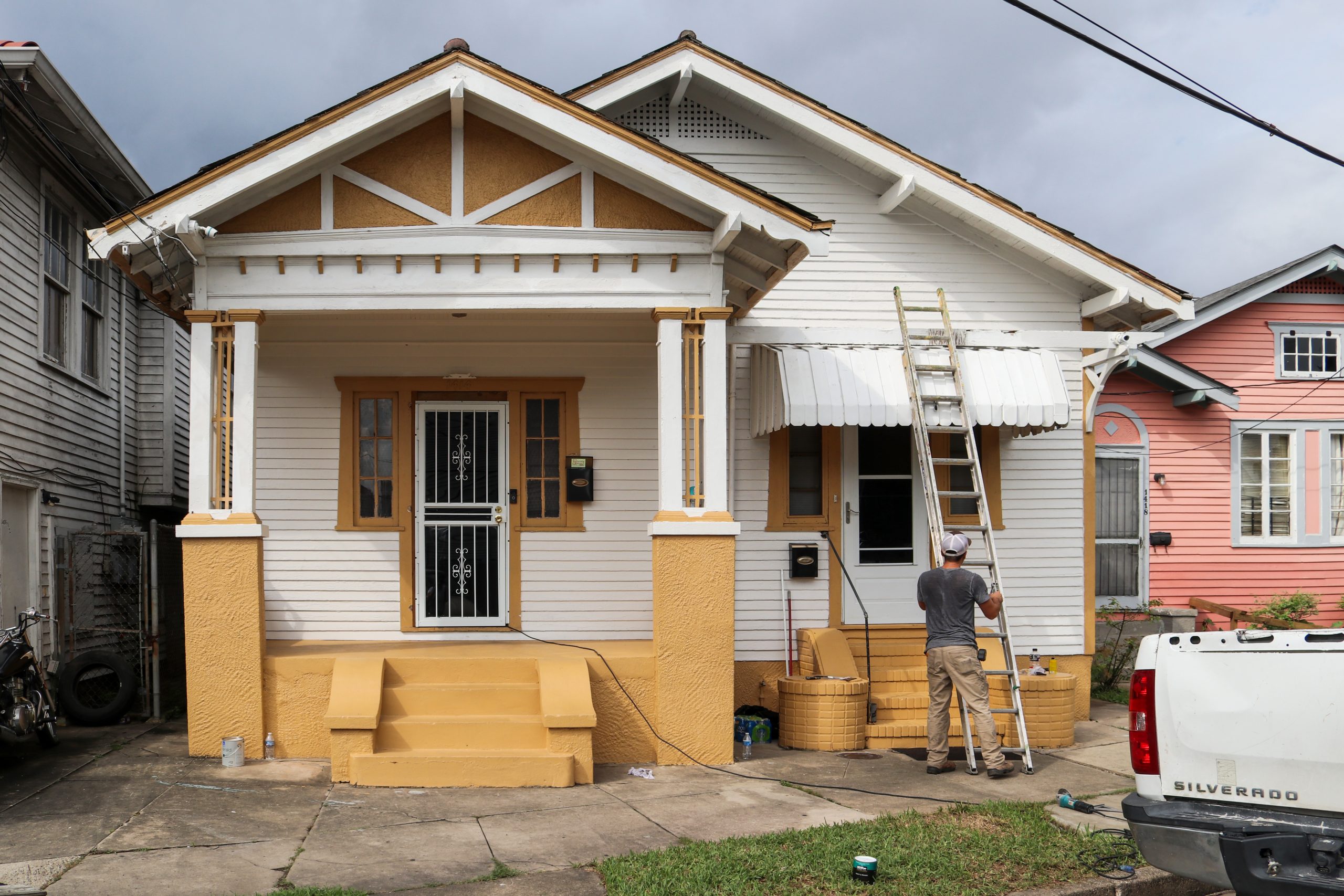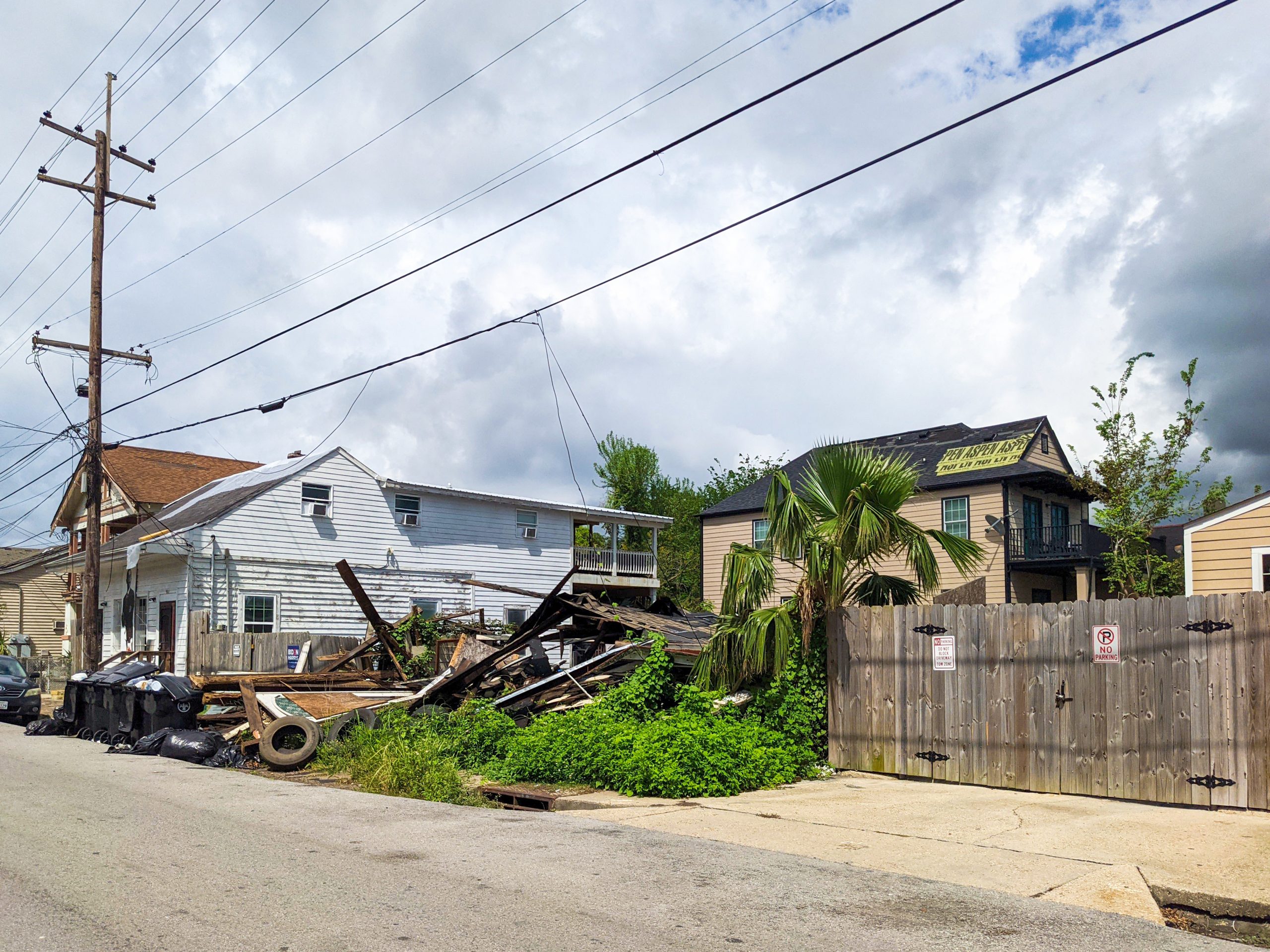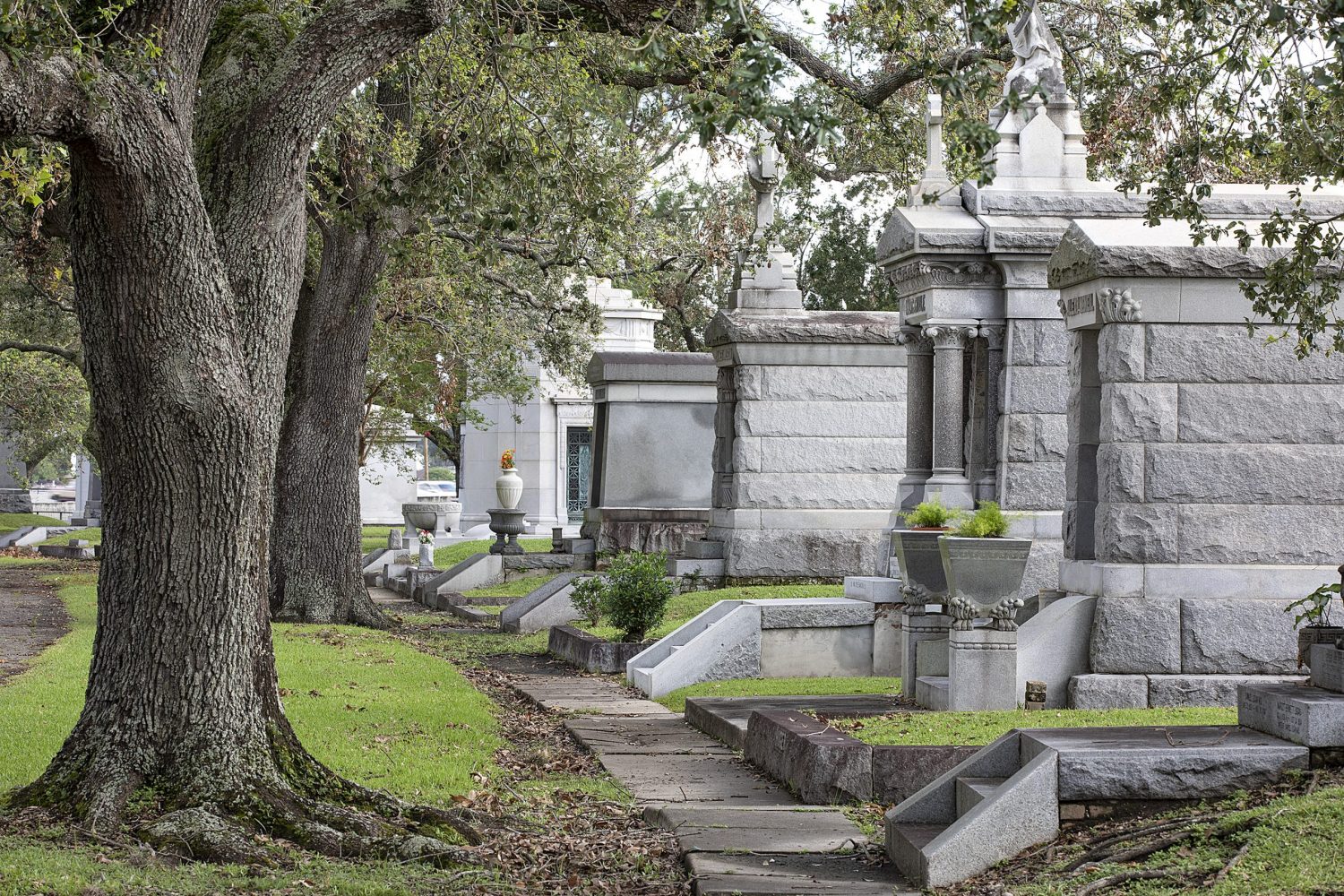This story, first published in our May 2014 issue, also appeared in the October issue of PRC’s Preservation in Print magazine. Interested in getting more preservation stories like this delivered to your door nine times a year? Become a member of the PRC for a subscription!
by Andrea McCarthy, Louisiana Division of Historic Preservation
Much of New Orleans’ history is visible through the layout of its historical buildings and neighborhoods. While generations have gone by, the streetscapes remain timeless, retaining the spirit of a city that is inseparable from its past.
At the heart of New Orleans is its neighborhoods, which have played an important role in both the physical and cultural development of the city. Buildings range from large extravagant homes to rows of simple shotguns with vernacular architectural details. Situated toward the center of each neighborhood is what could be considered its defining feature: the corner store. In some neighborhoods, it is not uncommon to see a corner store building at the end of nearly every block.
Whether it’s a bar, a restaurant or a grocer, these local buildings house some of the most charming and revealing features of the city. They were essential to the daily lives of local residents at a time when limited mobility required that a variety of services be available in close proximity to residential buildings.
Architects often designed corner stores in a scale and style similar to the surrounding buildings, with slight modifications to accommodate commercial use. In the French Quarter, these buildings are often two stories tall with a wrap balcony supported by columns. In the early faubourgs, however, corner store cottages commonly had a clipped corner entry that projected action toward the center of the intersection and away from the neighboring residences. The commercial portion of the building would often be at ground level. Additional openings and a few steps provided a transition into residential quarters. These buildings may have elements of Greek Revival, Italianate and even Craftsman styles, depending on the popular architecture of the time.
Photo 1 by David S. Ferry III. Photo 2 by Ken Lund.
Neighborhood development patterns changed dramatically in the middle of the 20th century, having a devastating effect on these corner businesses. Construction increased significantly after 1950, anchoring commercial buildings in the Central Business District and new residential neighborhoods in the suburbs. The age of the automobile had arrived, and residents were not only growing accustomed to commuting into the city but also to driving farther to reach groceries or other convenience businesses.
By the mid-20th century, neighborhood corner stores gave way to supermarkets. While a number of corner stores have continued to operate, many more closed their doors. Today, it is common to see a former corner store building converted into a residence. Many others have been demolished and turned into empty lots or new construction.
When corner store buildings cannot be used for their intended purpose, they lose some of their intrinsic value and face threats of abandonment or demolition. A part of the neighborhood story also comes to an end.
Advertisement
Fortunately, the fate of these buildings has been changing in recent years. Incentives designed to encourage the redevelopment of historical buildings mean that more corner stores are rehabilitated for a variety of uses. Rehabilitation tax credits are available when the rehabilitation is done in accordance with the U.S. Department of the Interior’s standards. At the state level these tax credits can provide a 20 percent credit on qualified rehabilitation expenditures, and at the federal level, property owners may be eligible to receive a 20 percent credit for rehabilitations of commercial buildings.
For instance, a corner store at Louisa and Dauphine streets in the Bywater neighborhood of New Orleans was vacant and in need of substantial rehabilitation. The property owner spent $372,984 in qualified expenditures to convert this abandoned building into a neighborhood cafe. Because the owner applied for both federal and state commercial tax credits, he received $167,843 in tax credits. The building underwent an impressive renovation that was sympathetic to the historical character of the building. (This article was first published in 2014, and the state historic rehabilitation tax credit at that time was 25 percent on qualified rehabilitation expenditures. The credit is now 20 percent for eligible costs and expenses incurred from Jan. 1, 2018, or later, regardless of the year in which the property is placed in service.)
Other examples throughout the city include the Hennessey food store in Mid-City, which was rehabilitated for $248,139. The property owners recouped $111,622 in both federal and state tax credits. With this financial help, the owners retained and repaired the building’s character-defining terra-cotta tile roof.
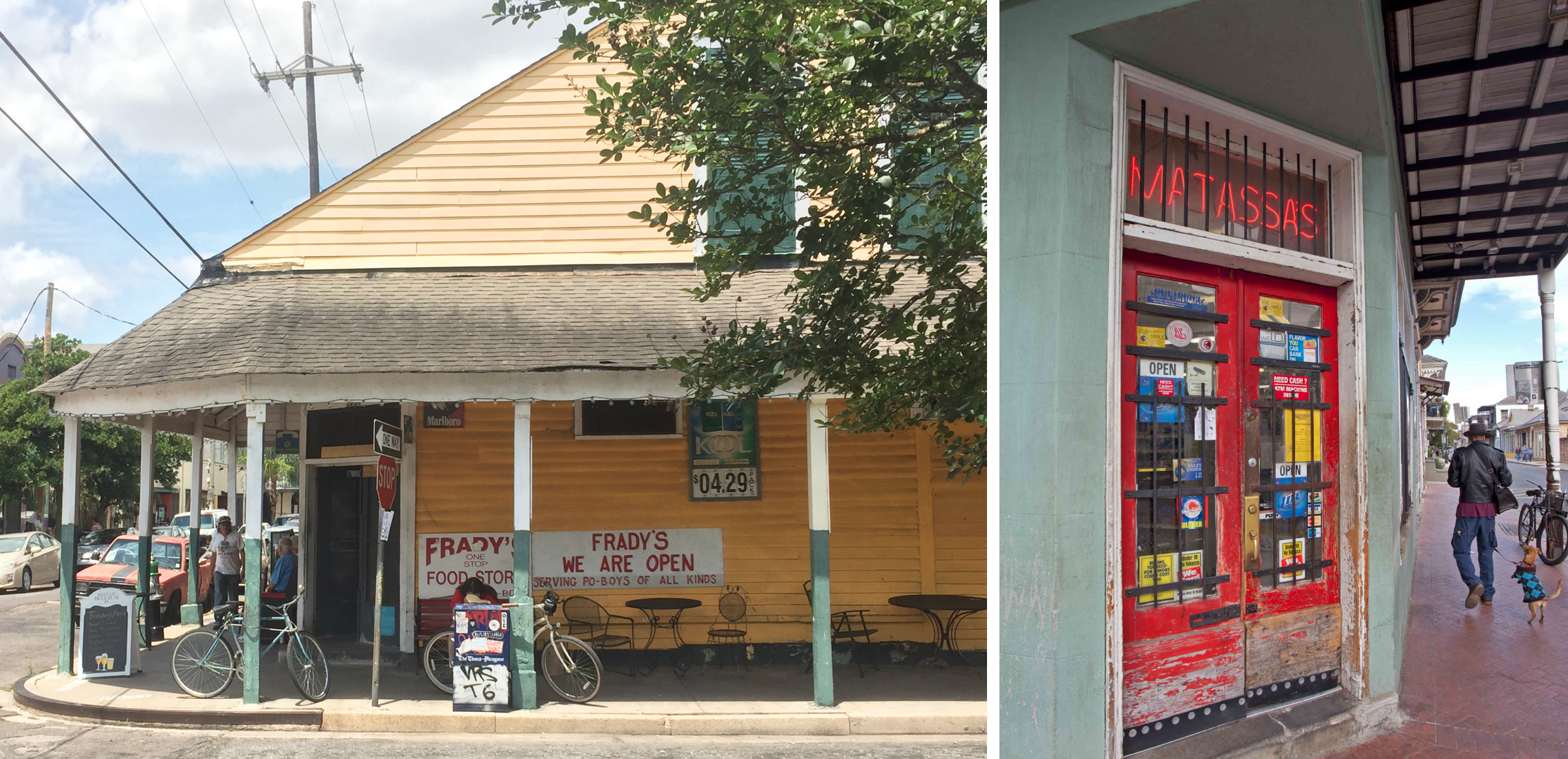
Deep within the Uptown neighborhood at the corner of Dryades and Cadiz streets, an abandoned corner commercial building has been redeveloped into a new boutique store. With the use of federal and state tax credits, the property owners offset the $249,658 spent in rehabilitation costs with $112,346 in historical rehabilitation tax credits.
At the end of a row of American townhouses on Magazine Street stands a two-story Greek Revival corner store. Historically a laundromat, this building was vacant for more than 30 years. With the help of federal and state tax credits, the property owners spent $411,648 on restoration but received $185,240 back. This exemplary rehabilitation demonstrates the effects such a renovation can have on the entire streetscape.
Finally, the owner of Dixie Tavern at the corner of Constance and Terpsichore streets used both federal and state tax credits for rehabilitation. After spending $594,528 in qualified expenditures on renovations, the owner recouped $267,537 in tax credits.
Financial incentives for rehabilitating historical properties, along with property owners willing to use these programs, have given many corner store buildings new opportunities to bring character and viability into neighborhoods. Thriving corner store buildings support stable, mixed-use neighborhoods that are attractive to new residents and provide the stability to retain long-term residents. Without financial incentives, these projects may have been too costly for local developers. By taking advantage of available tax incentives, developers and property owners have an opportunity to capitalize on the intrinsic value of these buildings, their ideal locations and floor plans designed for mixed use. The buildings themselves are renovated in a way that is consistent with the Department of the Interior’s Standards for Rehabilitation, thereby preserving the historical character of the structures while also updating them for modern use.
The social significance of corner stores within neighborhoods is recognized throughout New Orleans. Whether essential grocery providers, bars or restaurants full of local character, these buildings have played numerous roles that have changed throughout time in response to development patterns, market pressures and land-use regulations. Quite a few of these traditional businesses still exist today as cultural institutions.
Who has not had a po-boy at Parkway Tavern, celebrated a special occasion at Commander’s Palace or shared a drink with friends at Bacchanal? These are the types of neighborhood businesses that residents cannot imagine living without. Fortunately, thanks to the help of historical rehabilitation tax credits, there are incentives in place that will help renovate corner buildings and keep them in service.
The reinstitution of these commercial establishments has a profound effect on their surroundings, helping to preserve the thriving, unique neighborhoods that represent New Orleans.
Advertisements




